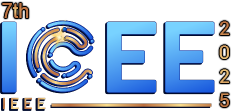
IEEE Electron Devices Society presents the 7th International Conference on Emerging Electronics (ICEE 2025), to be held in person in Bengaluru, India, from December 13–16, 2025. We warmly invite you to participate in this prestigious four-day conference, designed to foster cutting-edge discussions and collaborations in semiconductor technologies. ICEE 2025 will feature a diverse range of sessions, including, Technical and rump sessions, Industry-academia discussions, Plenary talks by distinguished experts, Policy sessions on the future of semiconductor technologies.
Our goal is to ensure a safe, comfortable, and enriching experience for all attendees, along with seamless travel arrangements for international participants. This conference serves as a pivotal platform to showcase India’s semiconductor ecosystem and foster deeper collaborations among students, researchers, and industry leaders worldwide. We look forward to your valuable contributions and to welcoming you in person at ICEE 2025 in Bengaluru.
General Chair,
7th IEEE ICEE







